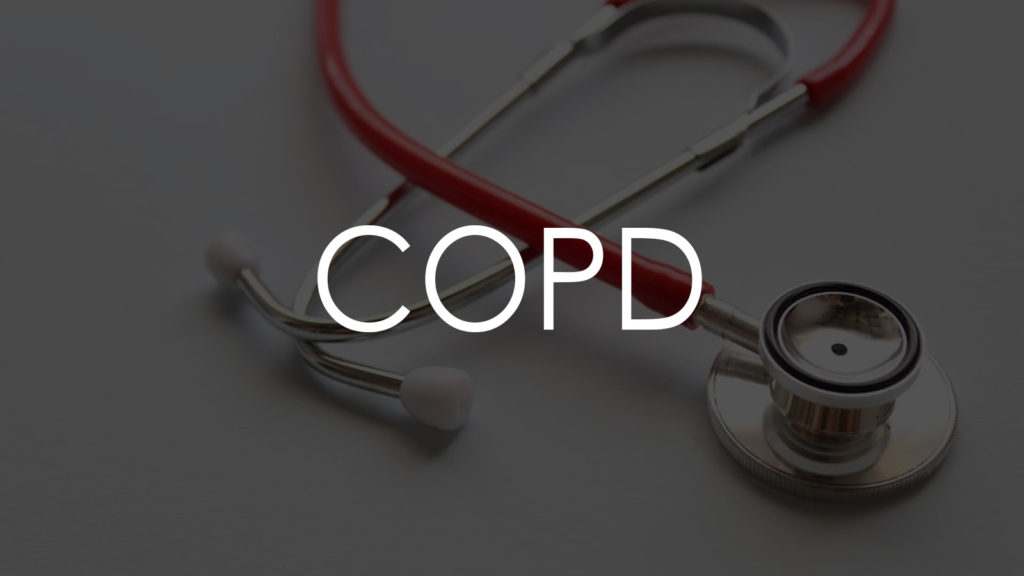Chronic Obstructive Pulmonary Disease (COPD) is a long-term condition that requires a comprehensive treatment approach to manage symptoms, slow disease progression, and improve quality of life. Although there is no cure for COPD, various treatment strategies can significantly alleviate symptoms and help patients maintain an active lifestyle. This article explores the different treatment options for COPD, focusing on non-drug therapies, medications, lifestyle changes, and other interventions.

1. Pulmonary Rehabilitation
Pulmonary rehabilitation is a key component of COPD management, focusing on:
- Exercise Training: Structured exercise programs are designed to improve the strength and endurance of the respiratory muscles, enhancing the patient’s ability to carry out daily activities with less breathlessness.
- Breathing Techniques: Patients are taught specific breathing exercises, such as pursed-lip breathing and diaphragmatic breathing, to help control shortness of breath and improve oxygen intake.
- Education: Pulmonary rehabilitation programs often include education about the disease, self-management strategies, and how to use inhalers and other devices effectively.
- Psychological Support: The programs may also offer psychological support to help patients cope with the emotional and mental health challenges associated with COPD.
2. Bronchodilators
Bronchodilators are a primary treatment for COPD, helping to:
- Relax Airway Muscles: These medications work by relaxing the muscles around the airways, which helps to open them up and make breathing easier.
- Short-acting vs. Long-acting: Short-acting bronchodilators provide quick relief from acute symptoms, while long-acting bronchodilators are used for ongoing symptom management and prevention of exacerbations.
- Inhaler Devices: Bronchodilators are typically administered via inhalers, allowing the medication to reach the lungs directly for faster action and fewer side effects.
3. Inhaled Corticosteroids
Inhaled corticosteroids are commonly used in COPD treatment to:
- Reduce Inflammation: These medications help reduce inflammation in the airways, decreasing the frequency and severity of COPD exacerbations.
- Combination Therapy: In many cases, inhaled corticosteroids are used in combination with long-acting bronchodilators for enhanced effectiveness.
- Prevention of Exacerbations: Regular use of inhaled corticosteroids can help prevent acute exacerbations, which are periods when symptoms suddenly worsen.
4. Oxygen Therapy
Oxygen therapy is recommended for COPD patients with low blood oxygen levels:
- Supplemental Oxygen: This treatment involves breathing in oxygen through a mask or nasal cannula to ensure that the body gets enough oxygen to function properly.
- Home Use: Many patients use oxygen therapy at home, often for extended periods or even continuously, depending on their oxygen needs.
- Portable Devices: Advances in technology have made portable oxygen concentrators available, allowing patients greater mobility while receiving oxygen therapy.
5. Lifestyle Changes
Lifestyle changes play a crucial role in managing COPD and slowing its progression:
- Smoking Cessation: Quitting smoking is the most important step a COPD patient can take to prevent further lung damage. Support programs, counseling, and nicotine replacement therapies can help individuals successfully quit smoking.
- Healthy Diet: A balanced diet rich in fruits, vegetables, and lean proteins can support overall health and improve energy levels. Maintaining a healthy weight is also important, as both obesity and being underweight can complicate COPD management.
- Regular Exercise: Staying physically active is vital for maintaining lung function and overall health. Even light activities like walking or stretching can help manage symptoms and improve quality of life.
- Avoiding Lung Irritants: Patients should avoid exposure to air pollution, secondhand smoke, dust, and chemical fumes, as these can exacerbate COPD symptoms.
6. Breathing Techniques and Airway Clearance
Specific techniques can help manage symptoms and clear mucus from the lungs:
- Pursed-Lip Breathing: This technique involves breathing in through the nose and exhaling slowly through pursed lips. It helps control shortness of breath and improves airflow.
- Diaphragmatic Breathing: Also known as belly breathing, this method focuses on using the diaphragm to breathe more deeply and efficiently.
- Airway Clearance Techniques: These include methods like postural drainage, chest percussion, and vibration to help loosen and remove mucus from the lungs.
7. Surgery and Other Interventions
In advanced cases of COPD, surgical and other medical interventions may be considered:
- Lung Volume Reduction Surgery (LVRS): This surgery involves removing damaged lung tissue to allow the remaining healthy tissue to function more effectively.
- Bullectomy: A procedure to remove large air spaces (bullae) that can form in the lungs and interfere with breathing.
- Lung Transplant: For severe cases of COPD, where other treatments have failed, a lung transplant may be considered. This is a major procedure with significant risks and benefits, typically reserved for the most severe cases.
- Endobronchial Valves: These are tiny, one-way valves placed in the airways to block airflow to damaged areas of the lung, allowing healthier parts of the lung to expand and function better.
8. Managing Exacerbations
COPD exacerbations are periods when symptoms suddenly worsen and require immediate attention:
- Early Intervention: Recognizing the early signs of an exacerbation, such as increased shortness of breath, more frequent coughing, and changes in mucus production, can help manage it more effectively.
- Action Plan: Patients should have a personalized action plan, developed with their healthcare provider, to address exacerbations. This plan may include adjustments in medications, increased use of inhalers, or seeking medical care.
- Hospitalization: Severe exacerbations may require hospitalization, where treatments can include more intensive oxygen therapy, intravenous medications, and close monitoring.
Conclusion
The treatment of COPD involves a multifaceted approach aimed at managing symptoms, improving lung function, and enhancing the patient’s quality of life. Through a combination of medication, lifestyle changes, pulmonary rehabilitation, and other interventions, individuals with COPD can lead fuller, more active lives despite their condition. Early diagnosis and a proactive treatment plan are essential in slowing the progression of COPD and reducing the impact of its symptoms.